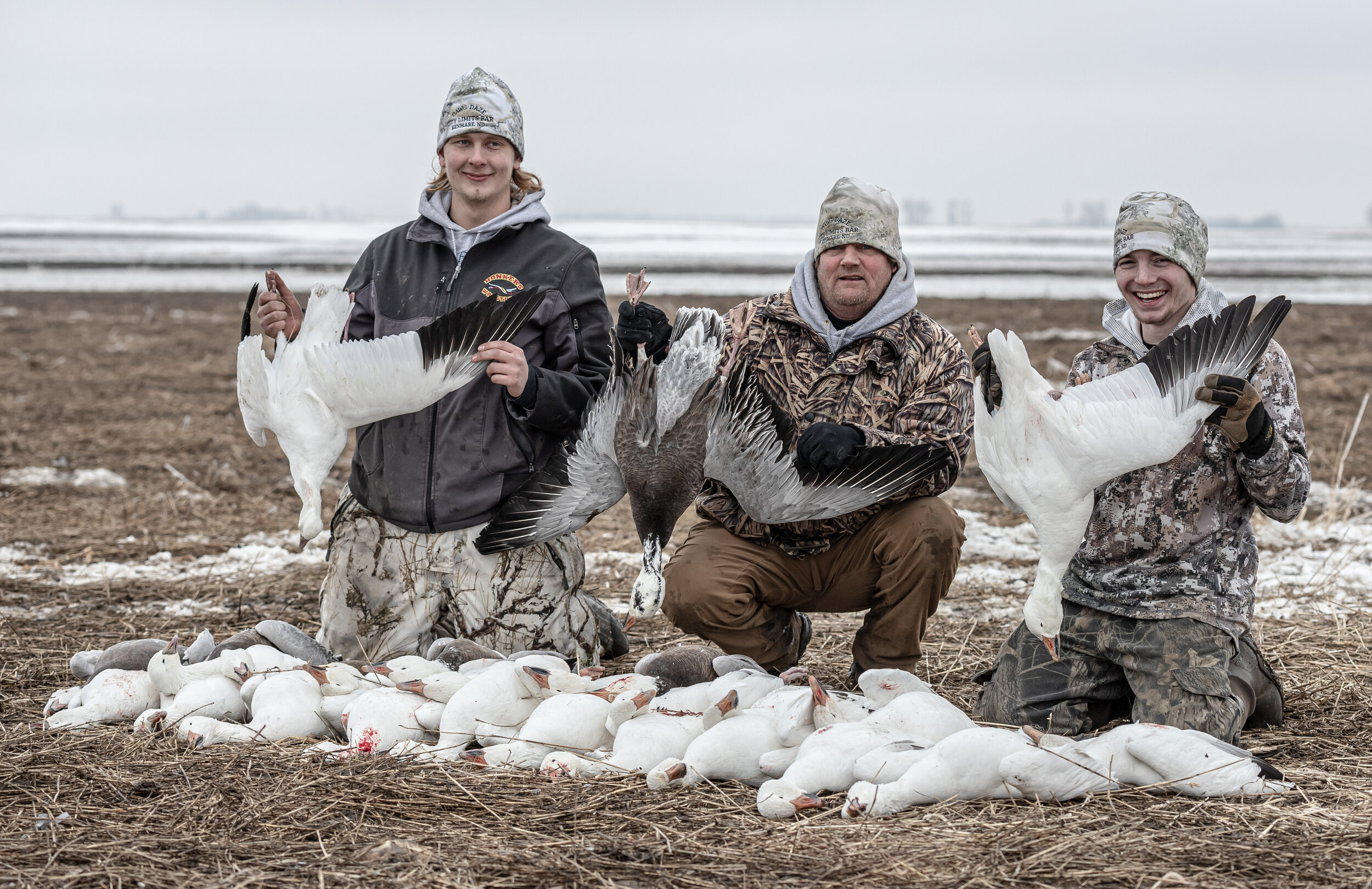Advanced Snow Goose Tips
Ryan Barnes for SPLIT REED
The time has come. The time for extended magazines, muddy fields, little to no sleep, and the shrieking sound of snow geese circling overhead. One of the most exhilarating feelings in the world is watching a wad of snows start to spin around you and slowly descend into the spread. There are waterfowlers who absolutely live for this time of year, and some who absolutely dread it, because of the massive headache that can come from the chase of the “white devil”. Putting out spreads of 3,000 socks and silos, and making chasing them from all the way up the snow line. It’s not something for the faint of heart. However, here are some tips for those that are hoping to take snow goose hunting to another level, and maybe delve into it a bit deeper.
Find the similar feeds
Snow geese will mow down any crop that they can, but usually, they tend to enjoy easily accessible grassier type plants. If you notice that snow geese are pounding a winter wheat field, go and try to lock up all the winter wheat fields that you can in the nearby area. Odds are, they won’t be on that field for too much longer (due to the volume and amount snows eat in such a short period of time), and if you hurry, you’ll be able to have the next “X” field locked up. Just pay attention to the fields that the birds are currently in, and what they seem to be eating the most of. That will give you an idea of how to plan for shoots soon to come.
Side spreads
This was a tactic I learned while hunting the Great Salt Lake and it works like a charm. Both for spoonies, and snows. Set your main spread where you want to have the kill hole, but then, set one or two “side spreads” of a hundred or so birds off a hundred or more yards to either side. If the birds are a little wary of landing in the big spread, the idea is that they should go and land with the side spread. Have one or two gunners in the side spreads taking turns. That way everyone gets the chance to shoot. Some may get butt-hurt when one group gets to shoot and the other doesn’t, but hey, that’s part of the game. Side spreads also work as a great confidence system, out of the sheer idea that it’s something different from the giant wad of decoys mashed up into one giant, white mass.
Go small and as realistic as possible when hunting high pressure or high wind days
It’s not exactly a mystery why this would be a successful tactic, but it’s one that seems to be worth mentioning. On days when it seems like geese are getting shot out of every field in every county, it doesn’t hurt to change things up a bit. Instead of rolling out the huge spread of 2,500 or 3,000 decoys, try to pick out some of your best looking, most realistic looking decoys, and set up a smaller spread. This leads me to another helpful hint, if you don’t have a small spread of high-quality snow decoys, get one! Now, I’m not saying you need to go out and take out a mortgage on buying 10 dozen Dave Smith snow and blue decoys. However, it’s in every snow goose hunter's best interest to have a small (9-12 dozen) high-quality decoy spread. You can always mix in the Dive Bombs to add more mass as needed. This also helps on windy days when the snows are looking for a quick and easy spot to land. If they see a realistic spread, with plenty of room to maneuver, I believe it helps your cause even more. Some of my highest success with snow geese has been over smaller spreads in higher pressured areas or on windy days. I believe it follows some of the same patterns as duck hunting- just being willing to do something different.
Hit ‘em on the corners!
This was a tip I learned from Jameison Theis of Snows Down Low (which if you haven’t bought for this coming season, you might want to jump on). Theis gave insight on raising and adjusting the volume when birds reach the edges of the spread or as they travel in or away from you. Like you would if you were working a honker call and trying to finish a big flock of Canadas. It only makes sense. Snows need to be coaxed into the spread, and by using your e-callers as a tool to sound more realistic as you adjust your volume and raise it on one end and lower it on another as the birds circle, instead of just having it as one, great big ball of sound, it will be more realistic to season skittish geese. Giving you a better edge to help add more birds to the pile at the end of the day.
At the end of the day, if you’re die-hard enough to sit in a white hoodie in the middle of a muddy field as you wait for the chance to unload $15.00 worth of shells at snows, you probably have a few tricks of the trade up your sleeve yourself. Everyone has their own “advanced” tips of snow goose hunting, and in all reality, there are days, weeks, and even months when they never work! That’s part of the thrill of snow goose hunting (and endless frustration). There is no secret recipe to killing snow geese day in and day out. But hopefully, these tips help you bag a few more this season, and maybe even help you add a few more tips you find out yourself to your bag of tricks.





